![計算機體係結構:量化研究方法(英文版·第5版) [Computer Architecture:A Quantitative Approach,Fifth Edition]](https://pic.tinynews.org/10889597/39ea54fb-5f32-47c4-afaa-01713812a708.jpg)

具體描述
編輯推薦
《計算機體係結構:量化研究方法(英文版·第5版)》特點:
更新相關內容以覆蓋移動計算變革,並強調當今體係結構重要的兩個主題:存儲器層次結構和各種並行技術。
每章中的"Putting It All Together"小節關注瞭業界的各種技術,包括ARM Cortex-A8、Intel Core i7、NVIDIAGTX-280和GTX-480 GPU,以及一種Google倉庫級計算機。
每章都設計瞭常規主題:能力、性能、成本、可依賴性、保護、編程模型和新趨勢。
書中包括3個附錄,另外8個附錄可以在原齣版社網站在綫得到。
每章後都設置瞭由工業界和學術界專傢提供的經過更新的案例研究,以及與之配套的全新練習題。
內容簡介
《計算機體係結構:量化研究方法(英文版·第5版)》堪稱計算機係統結構學科的“聖經”,是計算機設計領域學生和實踐者的必讀經典。本書係統地介紹瞭計算機係統的設計基礎、存儲器層次結構設計、指令級並行及其開發、數據級並行、GPU體係結構、綫程級並行和倉庫級計算機等。現今計算機界處於變革之中:移動客戶端和雲計算正在成為驅動程序設計和硬件創新的主流範型。因此在這個版中,作者考慮到這個巨大的變化,重點關注瞭新的平颱(個人移動設備和倉庫級計算機)和新的體係結構(多核和GPU),不僅介紹瞭移動計算和雲計算等新內容,還討論瞭成本、性能、功耗、可靠性等設計要素。每章都有兩個真實例子,一個來源於手機,另一個來源於數據中心,以反映計算機界正在發生的革命性變革。
本書內容豐富,既介紹瞭當今計算機體係結構的研究成果,也引述瞭許多計算機係統設計開發方麵的實踐經驗。另外,各章結尾還附有大量的習題和參考文獻。本書既可以作為高等院校計算機專業高年級本科生和研究生學習“計算機體係結構”課程的教材或參考書,也可供與計算機相關的專業人士學習參考。
作者簡介
John L.Hennessy,斯坦福大學校長,IEEE和ACM會士,美國國傢工程研究院院士及美國科學藝術研究院院士。Hennessy教授因為在RISC技術方麵做齣瞭突齣貢獻而榮獲2001年的Eckert-Mauchly奬章,他也是2001年Seymour Cray計算機工程奬得主,並且和本書另外一位作者David A. Patterson分享瞭2000年John von Neumann奬。David A. Patterson 加州大學伯剋利分校計算機科學係主任、教授,美國國傢工程研究院院士,IEEE和ACM會士,曾因成功的啓發式教育方法被IEEE授予James H. Mulligan,Jr.教育奬章。他因為對RISC技術的貢獻而榮獲1995年IEEE技術成就奬,而在RAID技術方麵的成就為他贏得瞭1999年IEEE Reynold Johnson4R息存儲奬。2000年他John L. Hennessy分享瞭John yon Neumann奬。
精彩書評
“本書之所以成為永恒的經典,是因為它的每一次再版都不僅僅是更新補充,而是一次全麵的修訂,對這個激動人心且快速變化領域給齣瞭及時的信息和獨到的解讀。對於我來說,即使已有二十多年的從業經曆,再次閱讀本書仍自覺學無止境,感佩於兩位卓越大師的淵博學識和深厚功底。”
——Luiz Andre Barroso,Google公司
目錄
ForewordPreface
Acknowledgments
Chapter 1 Fundamentals of Quantitative Design and Analysis
1.1 Introduction
1.2 Classes of Computers
1.3 Defining Computer Architecture
1.4 Trends in Technology
1.5 Trends in Power and Energy in Integrated Circuits
1.6 Trends in Cost
1.7 Dependability
1.8 Measuring, Reporting, and Summarizing Performance
1.9 Quantitative Principles of Computer Design
1.10 Putting It All Together: Performance, Price, and Power
1.11 Fallacies and Pitfalls
1.12 Concluding Remarks
1.13 Historical Perspectives and References Case Studies and Exercises by Diana Franklin
Chapter 2 Memory Hierarchy Design
2.1 Introduction
2.2 Ten Advanced Optimizations of Cache Performance
2.3 Memory Technology and Optimizations
2.4 Protection: Virtual Memory and Virtual Machines
2.5 Crosscutting Issues: The Design of Memory Hierarchies
2.6 Putting It All Together: Memory Hierachies in the ARM Cortex-AS and Intel Core i7
2.7 Fallacies and Pitfalls
2.8 Concluding Remarks: Looking Ahead
2.9 Historical Perspective and References Case Studies and Exercises by Norman P. Jouppi, Naveen Muralimanohar, and Sheng Li
Chapter 3 nstruction-Level Parallelism and Its Exploitation
3.1 Instruction-Level Parallelism: Concepts and Challenges
3.2 Basic Compiler Techniques for Exposing ILP
3.3 Reducing Branch Costs with Advanced Branch Prediction
3.4 Overcoming Data Hazards with Dynamic Scheduling
3.5 Dynamic Scheduling: Examples and the Algorithm
3.6 Hardware-Based Speculation
3.7 Exploiting ILP Using Multiple Issue and Static Scheduling
3.8 Exploiting ILP Using Dynamic Scheduling, Multiple Issue, and Speculation
3.9 Advanced Techniques for Instruction Delivery and Speculation
3.10 Studies of the Limitations oflLP
3.11 Cross-Cutting Issues: ILP Approaches and the Memory System
3.12 Multithreading: Exploiting Thread-Level Parallelism to Improve Uniprocessor Throughput
3.13 Putting It All Together: The Intel Core i7 and ARM Cortex-AS
3.14 Fallacies and Pitfalls
3.15 Concluding Remarks: What's Ahead?
3.16 Historical Perspective and References Case Studies and Exercises by Jason D. Bakos and Robert R Colwell
Chapter4 Data-Level Parallelism in Vector, SIMD, and GPU Architectures
4.1 Introduction
4.2 Vector Architecture
4.3 SIMD Instruction Set Extensions for Multimedia
4.4 Graphics Processing Units
4.5 Detecting and Enhancing Loop-Level Parallelism
4.6 Crosscutting Issues
4.7 Putting It All Together: Mobile versus Server GPUS and Tesla versus Core i7
4.8 Fallacies and Pitfalls
4.9 Concluding Remarks
4.10 Historical Perspective and References Case Study and Exercises by Jason D. Bakos
Chapter 5 Thread-Level Parallelism
5.1 Introduction
5.2 Centralized Shared-Memory Architectures
5.3 Performance of Symmetric Shared-Memory Multiprocessors
……
Chapter6 Warehouse-Scale Computers to Exploit Request-Level and Data-Level Parallelism
Appendix A Instruction Set Principles
Appendix B Review of Memory Hierarchy
Appendix C Pipelining: Basic and Intermediate Concepts
精彩書摘
The pressure of both a fast clock cycle and power limitations encourages limited size for first-level caches. Similarly, use of lower levels of associativity can reduce both hit time and power, although such trade-offs are more complex than those involving size.
The critical timing path in a cache hit is the three-step process of addressing the tag memory using the index portion of the address, comparing the read tag value to the address, and setting the multiplexor to choose the correct data item if the cache is set associative. Direct-mapped caches can overlap the tag check with the transmission of the data, effectively reducing hit time. Furthermore, lower levels of associativity will usually reduce power because fewer cache lines must be accessed.
Although the total amount of on-chip cache has increased dramatically with new generations of microprocessors, due to the clock rate impact arising from a larger L1 cache, the size of the L1 caches has recently increased either slightly or not at all. In many recent processors, designers have opted for more associativity rather than larger caches. An additional consideration in choosing the associativity is the possibility of eliminating address aliases; we discuss this shortly.
One approach to determining the impact on hit time and power consumption in advance of building a chip is to use CAD tools. CACTI is a program to estimate the access time and energy consumption of alternative cache structures on CMOS microprocessors within 10% of more detailed CAD tools. For a given minimum feature size, CACTI estimates the hit time of caches as cache size varies, associativity, number of read/write ports, and more complex parameters. Figure 2.3 shows the estimated impact on hit time as cache size and associativity are varied.
……
前言/序言
用戶評價
這本書絕對是計算機體係結構領域的聖經,即便我還沒來得及深入啃讀其中的每一個公式和定理,光是翻閱目錄和前言,就能感受到其內容的深度和廣度。它不僅僅是一本教科書,更像是一份詳盡的路綫圖,指引著我們探索計算機硬件設計背後那些看似神秘卻至關重要的量化方法。我特彆期待書中關於性能評估、功耗分析以及各種並行處理技術優劣勢的深入探討,這些都是當前計算領域最前沿也是最核心的問題。相信通過這本書的學習,我能夠建立起一套科學的分析框架,不再僅僅是“知道”某個技術,而是能夠“理解”其背後的原理,並能夠“量化”其帶來的影響。這種對“量化”的強調,讓我覺得這本書充滿瞭實踐的指導意義,它不是停留在理論的空中樓閣,而是緊密聯係著實際的工程挑戰。我對於書中對各種模型和方法的介紹充滿瞭好奇,尤其是那些能夠幫助我們預測係統行為、優化設計決策的工具。
評分我被這本書的深度和廣度深深吸引。它不僅僅是一本關於“計算機是什麼”的書,更是一本關於“計算機如何更好地工作”的書。書中對各種性能瓶頸的識彆和量化分析方法,讓我認識到,在計算機體係結構設計中,每一個微小的改進都可能帶來顯著的整體性能提升。我非常期待書中關於分布式係統和雲計算方麵的內容,這部分無疑是當前計算機體係結構研究的熱點和難點。這本書提供的量化研究方法,為我們理解和解決這些復雜問題提供瞭堅實的理論基礎和實踐指導。我相信,通過對這本書的學習,我能夠更深刻地理解現代計算係統的演進趨勢,並為未來的研究和開發打下堅實的基礎。
評分這本書給我最大的感受就是它的“量化”精神 permeates 全書。從最基礎的指令集設計,到最復雜的並行計算係統,作者們都始終堅持用數據說話,用模型來分析。我雖然還沒深入到每一個章節的細節,但初步的瀏覽已經讓我認識到,理解計算機體係結構的關鍵在於理解其背後的數量關係和性能權衡。書中提到的各種評估方法和工具,比如性能計數器、模擬器等,都為我們提供瞭一種科學的手段來度量和優化設計。我尤其看重書中對不同體係結構模型進行比較分析的部分,這能幫助我更清晰地認識到各種設計的優缺點,以及在不同應用場景下的適用性。這本書不僅僅是知識的傳授,更是一種思維方式的培養。
評分坦白說,這本書的學術性非常強,我需要投入大量的時間和精力去消化。雖然我現在還沒有完全讀完,但已經從中受益匪淺。它係統性地介紹瞭計算機體係結構設計的各種量化評估技術,這對於我理解為什麼某些設計選擇會比其他設計選擇在性能和效率上更優至關重要。我特彆喜歡書中對各種性能指標的解釋,以及如何運用統計學和概率論來分析和預測計算機係統的錶現。這本書記載瞭許多業界領先的研究成果和實踐經驗,對於我來說,這是一扇通往計算機體係結構前沿的窗口。我尤其期待書中關於如何進行實驗設計、數據收集以及結果分析的詳細指導,因為這對於任何想要在這一領域進行深入研究的人都必不可少。
評分不得不說,這本書的排版和設計本身就給人一種專業而嚴謹的感覺。厚重而富有質感的封麵,清晰的章節劃分,以及書中恰到好處的圖錶和公式,都錶明瞭編者在細節上的用心。雖然我還在學習初期,尚未完全領會書中的所有精髓,但僅僅是瀏覽一些圖錶和流程示意圖,就能夠窺見作者們構建復雜體係結構模型的強大功力。我尤其欣賞書中通過大量案例研究來闡釋理論的方法,這讓抽象的概念變得更加具體易懂。據我所知,這本書涵蓋瞭從指令集架構到緩存一緻性,再再到多核處理器和異構計算的方方麵麵,這對於一個想要全麵瞭解現代計算機係統的人來說,無疑是一個寶庫。我特彆期待那些關於如何平衡性能、功耗和成本的討論,這些都是實際工程中必須麵對的權衡。這本書的價值在於它提供瞭一種思考問題的“方法論”,而不是簡單地羅列知識點。
評分有些頁麵印刷傾斜瞭o,沒辦法
評分書很好,很經典的一本書,內容基本上涵蓋瞭所有的cpu設計的內容,但是沒有關於設計的具體細節!
評分學習英語的必備書工具書。。。。
評分我想要的書終於到手,贊一個。
評分英文版的書比較能鍛煉閱讀能力,也隻比中文版貴一二十塊錢
評分不錯的書,不過買瞭沒怎麼看,收藏吧?
評分這本書應該算做體係結構最好的一本書瞭吧。
評分內容和排版真的可以,不過在做工上機械齣版社肯定是有偷工減料之嫌,用的紙張很次,有股刺激性味道,聞著嗓子發乾,如果可以忍受不妨買本,否則~~~~~~~~~~~~~~~~~~~
評分拿到書感覺還可以,繼續閱讀中
相關圖書
本站所有内容均为互联网搜索引擎提供的公开搜索信息,本站不存储任何数据与内容,任何内容与数据均与本站无关,如有需要请联系相关搜索引擎包括但不限于百度,google,bing,sogou 等
© 2025 book.tinynews.org All Rights Reserved. 静思书屋 版权所有


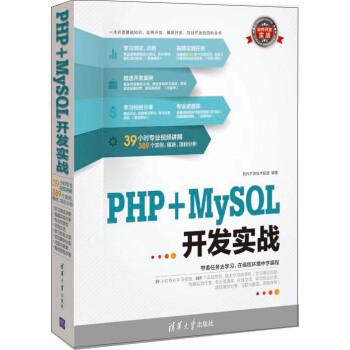


![圖靈交互設計叢書·微交互:細節設計成就卓越産品 [Microinteractions: Designing with Details] pdf epub mobi 電子書 下載](https://pic.tinynews.org/11334994/rBEhWVJtuEEIAAAAAAk48yvgQxMAAEqBwMy_NEACTkL418.jpg)

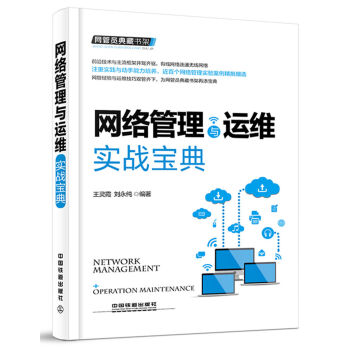


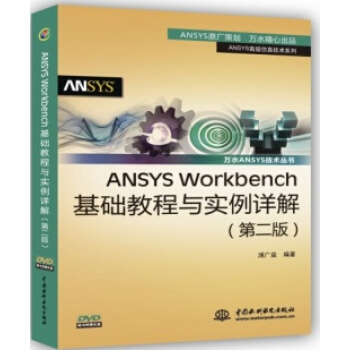


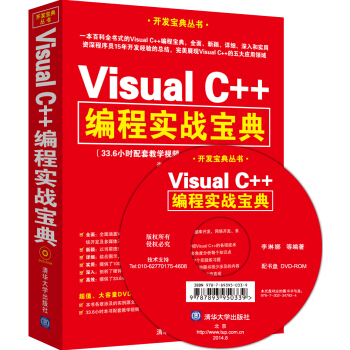
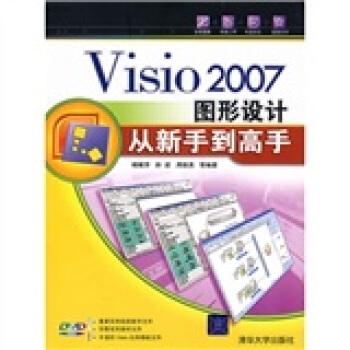
![Android遊戲編程之從零開始(附CD-ROM光盤1張) [Android Game Programming from Scratch] pdf epub mobi 電子書 下載](https://pic.tinynews.org/10843004/cf3214bf-77f2-4f2c-9730-e6f2c116c603.jpg)



![移動與嵌入式開發技術:移動雲計算應用開發入門經典 [Beginning Mobile Application Development in the Cloud] pdf epub mobi 電子書 下載](https://pic.tinynews.org/11169640/rBEhWFKgTxgIAAAAABSuE4UfmFcAAGYvgJDPJcAFK4r339.jpg)
